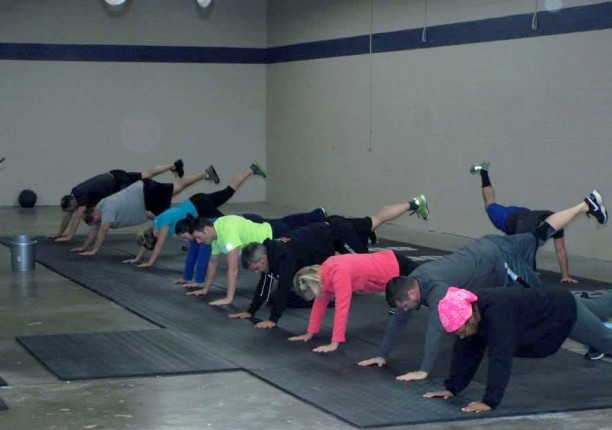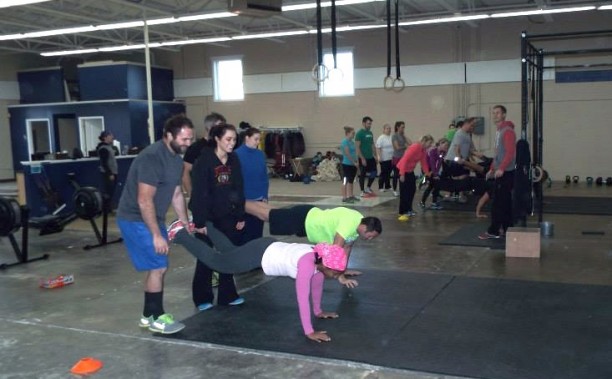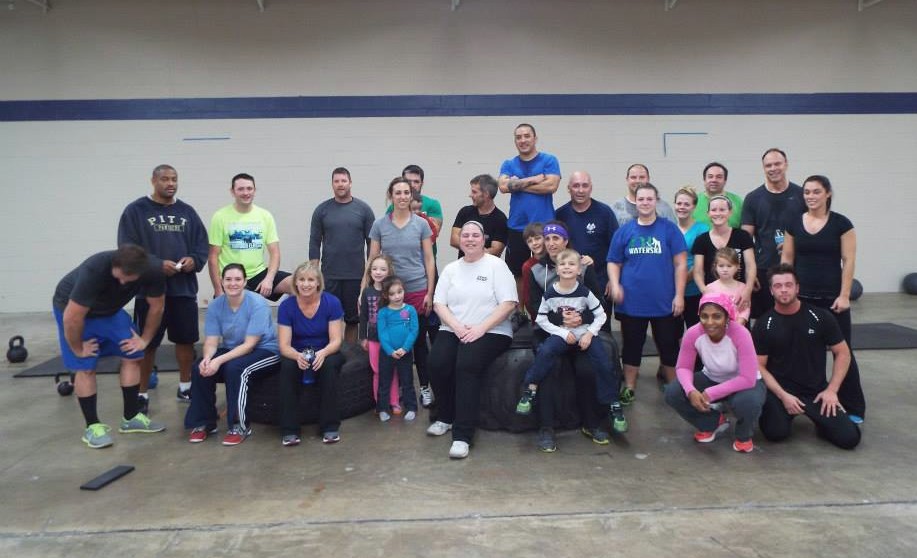As much as I’m trying to fight it, the offseason is upon us. I’ve spent the past few weeks doing a lot of thinking about what I want to accomplish over this winter, and what might be the best way to go about it. Above all else, I want to come out next spring stronger and lighter than ever. This year, I stretched my endurance to places it’s never been, but for next season, it’s time to add speed and strength. I want to be a better hill climber and sprinter, both on my bikes and on foot. Endurance is always going to be the focus of my racing, but I do enough short (less than an hour) races that I’ve been able to realize my weak points.
Adding strength training to my offseason program last winter paid huge dividends this year. I followed Wendler’s 5-3-1 program for about 4 months and saw really solid gains, but the program is not without its drawbacks. Because it relies on incremental progression, you have to be in the gym 3-4 days a week to make it work. As the race season spooled up I tried to make do with less, but found myself faltering.
Another issue I faced is that I worked out almost entirely by myself. I could usually find a spot for bench press, and overhead press is sort of a yes or no question, but my squats and deadlift need coaching to get better. Especially my squats, which are embarrassing in their lack of power. While those 4 movements (plus a little bodyweight work) are certainly enough to make you strong in almost every muscle area, it also gets a little dull to do them, and only them, over and over and over, week after week. Variety is what keeps me going, and the lack of it has been a big reason that I haven’t stuck with a single weightlifting program for more than 6 months.
These problems speak to an overall issue I’ve noticed with non-customized training plans. Whether they’re for lifting, or running, or biking, they never seem to leave much room for variety. Most running programs for endurance athletes have you out on the road 4 or more days a week. I’ve tried that, but I end up just beating myself to pieces trying to log the required miles. Cycling plans are easier on the joints, of course, but they often require an investment of hours that simply isn’t practical for anybody with a full time job and other life responsibilities. And weightlifting programs, even the good ones, will definitely build strength, but often in ways I don’t need for what I’m trying to do. A 2x bodyweight bench press will help me out precisely zero on the bike, and the associated bulk will actually slow me down.
Over this year, I figured out two very key truths, at least for my purposes. First, cross training can cover a multitude of sins. A lot of running coaches will tell you that there’s no way to lower, say, your half marathon time, without doing a bunch of really focused running work. You could call my running “program” a lot of things this year, but focused is not one of them. And yet, I banged out PRs with regularity at every distance this year, including knocking 26 minutes off half marathon time from last year. All this, while logging less than 250 miles of running, racing and training all year long. How did that happen? I didn’t only run.
The second truth is that you have to consider where you’re trying to go when looking for a plan. In other words, if your goals don’t include looking like an Olympic powerlifter, or a Kenyan marathoner, or a Tour cyclist, then why follow any of their plans? Don’t misunderstand, I don’t work out for cosmetic reasons, ever. Looking better in the mirror is nice, but my wife loved me when I was fat, so I’m not worried about it. What I’m saying is that certain types of athletes will generally have certain types of bodies. Following a plan that got them there will not get you to a demonstrably different place, physically.
That leaves me trying to define exactly what it is I’m trying to be. I love my bikes, but they aren’t the only thing I do. I love to run as well, and I enjoy being strong enough to move myself around efficiently, for things like the Mud Ninja and, well, life in general. I know that weaknesses in certain areas of my fitness have, in the past, resulted in injury, something I’d like to stop doing.
So, bearing all that in mind, I came up with a list of requirements for my winter strength and conditioning regime:
- It has to make me stronger. Not just stronger than I am now, at the end of race season, but stronger than I was last spring.
- It has to keep me interested, with a variety of exercises.
- It has to include at least some coaching of the more complex movements, and should introduce me to new ones, something that hasn’t happened since high school.
- It can’t be terribly expensive. My bicycle habit is already expensive enough.
- It should focus on leg and core strength, with a nod to endurance activity.
- It should result in me being a more well-rounded, robust athlete.
- Ideally, it should be something I can scale back on through the racing season, but still keep doing.
Which means,
- It has to allow room for me to train in other ways.
A few of my friends would point out that I basically just described CrossFit. And they might be right. A few of my other friends will want to slap the freckles right off my face for saying that.
But I think it’s worth a try. I’ve watched a handful of people I know start up with CrossFit over the past couple years, and the results are undeniable. People who were not strong or fit at all made serious strides toward being both. People who were strong and fit when they walked in got better. One guy I used to be able to keep pace with on the mountain bike is now leaving me for dead without even trying, and he barely rides any more except for racing. What does he do? CrossFit, 5 days a week.
I dropped in at AKP with Katie earlier this year, just to see what it was about, and left impressed. Today we dropped in at CrossFit Dedication, a new “box” (slang for a CF gym) that recently opened only a few minutes’ drive from our house, to check it out. I was impressed again, especially with how much fun I was having. (Full disclosure: Saturday workouts at most CF gyms are both free and team-oriented, which is totally marketing. Every day is not like Saturday. But it’s effective marketing.) While the exercises we did weren’t terribly complex, they were still thoroughly instructed and effectively coached, something I was hoping to see. After talking it over with Katie, we decided to give Dedication a try for the month of December and see how it goes.
I’ve been very public with my concerns over CrossFit’s shortcomings and challenges. But in reality, a whole lot of those shortcomings are present in almost every program, and they boil down to personal responsibility, more than anything. Will CrossFit make me as outright strong as I could possibly be? No, but that’s not where I’m trying to go. Will it be my offseason answer, to make me a better overall athlete, which is where I am trying to go? I think so. Time will tell.




[…] Thanksgiving, Katie wanted to try and drop in on a box to get a workout in. Having already made the decision to try CrossFit for this offseason, I couldn’t see any reason not to join her. Maybe I should […]
[…] the prescribed (Rx) weights and reps on most of the workouts can be daunting. For me, since I started going regularly late last year, they’ve ranged from “hey, I could almost… no I can’t” […]
[…] technique ends once the clock starts. I admit, that was my impression as well before I decided to try it for myself. The truth is, if the workout is to do as many reps as possible in a given time, you only get to […]